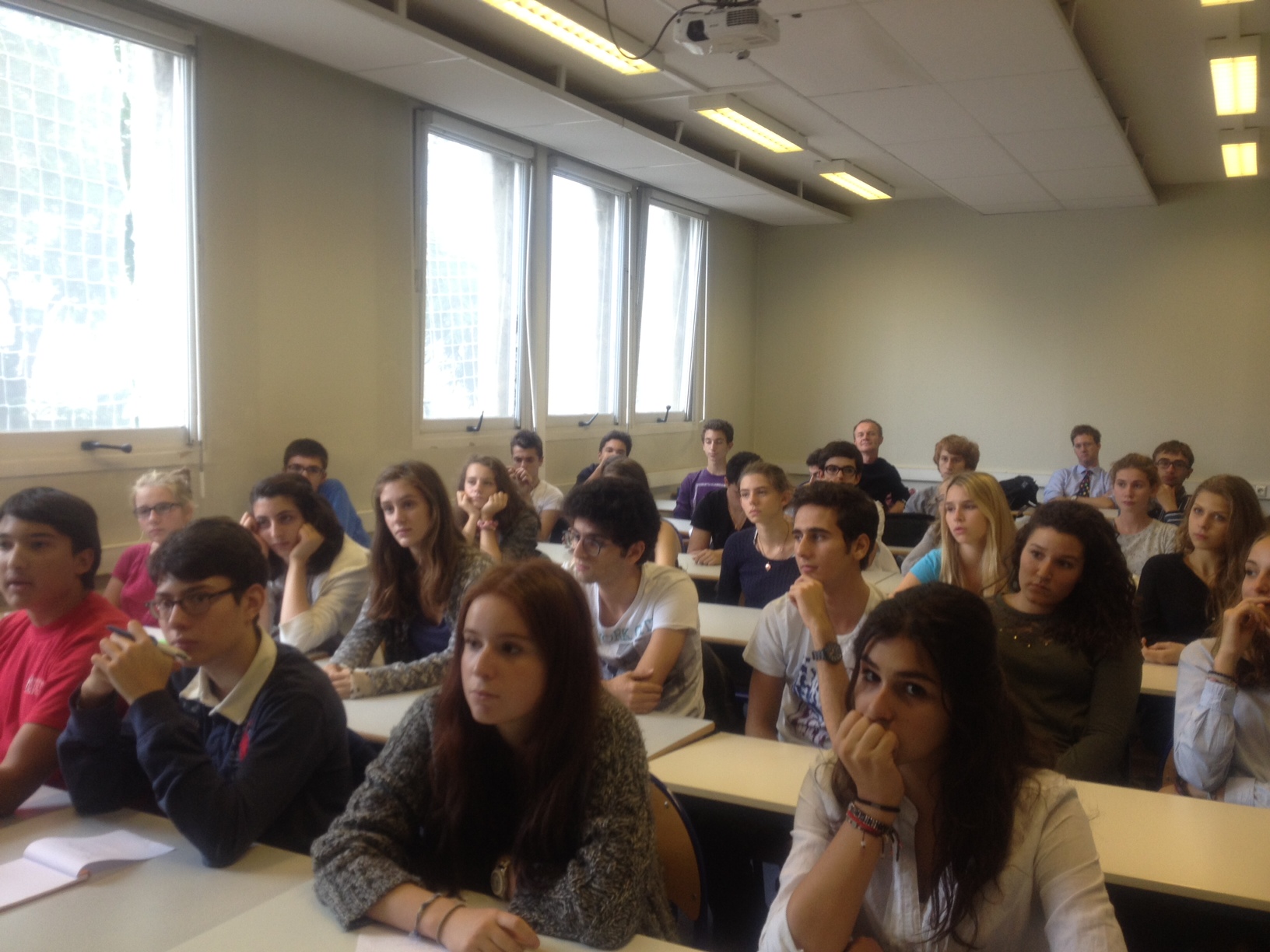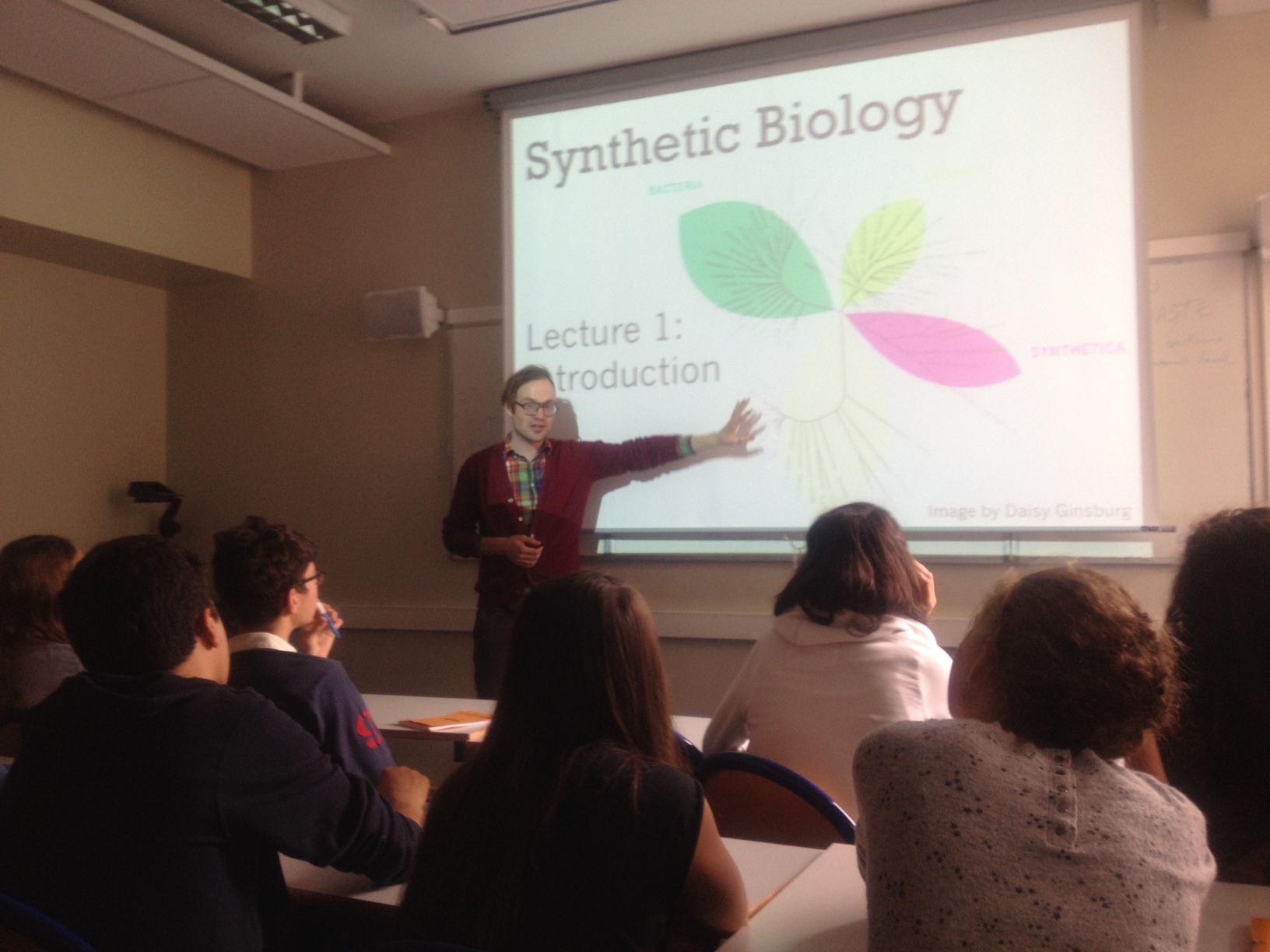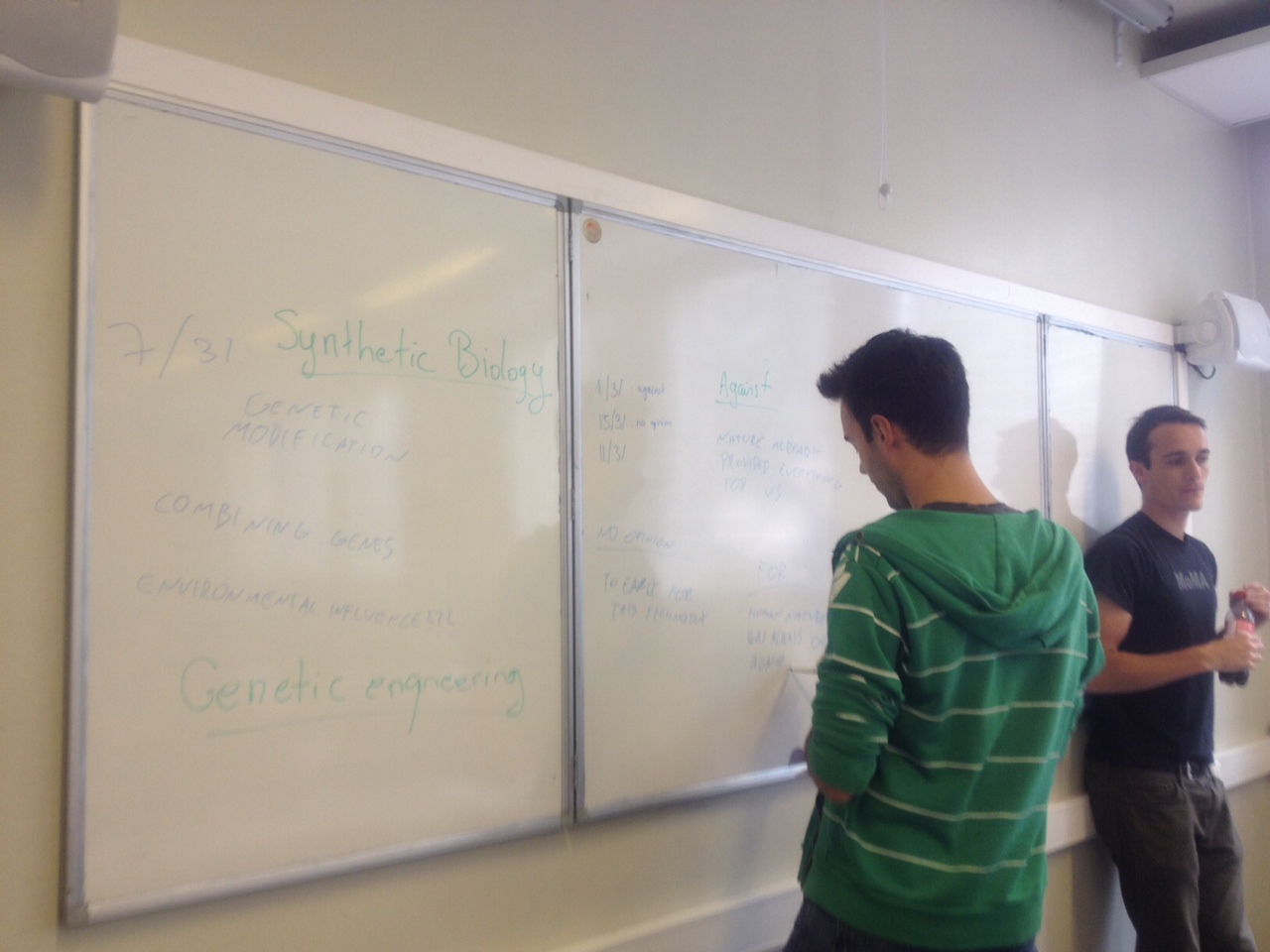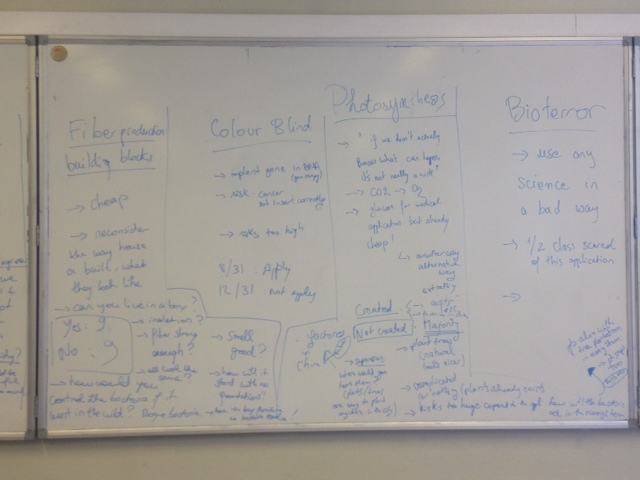Team:Paris Bettencourt/Human Practice/Workshop
From 2012.igem.org
(→Video) |
(→Videos) |
||
| (16 intermediate revisions not shown) | |||
| Line 60: | Line 60: | ||
<center> | <center> | ||
| + | <html> | ||
<br> | <br> | ||
| - | |||
<iframe width="560" height="315" src="http://www.youtube.com/embed/jexRKaKw5HI" frameborder="0" allowfullscreen></iframe> | <iframe width="560" height="315" src="http://www.youtube.com/embed/jexRKaKw5HI" frameborder="0" allowfullscreen></iframe> | ||
<br> | <br> | ||
<iframe width="560" height="315" src="http://www.youtube.com/embed/LOMbF9AD4Sg" frameborder="0" allowfullscreen></iframe> | <iframe width="560" height="315" src="http://www.youtube.com/embed/LOMbF9AD4Sg" frameborder="0" allowfullscreen></iframe> | ||
| - | <html> | + | </html> |
| + | </center> | ||
== Pictures == | == Pictures == | ||
Latest revision as of 16:20, 26 September 2012
Contents |
Why
- Only 17% of Europeans, and 12% of the french population, had heard about synthetic biology in 2010 (Eurobarometer 2010 on biotechnoly). In our human practice report, we came to the conclusion that awarness should be raised, and that educating middle and high school students could be one way, amongst others, to achieve this goal. Our aim is that people can understand better the world they live in, the technologies that are shapping/will shape their lives, and to enable them to make up their mind (pro, against) on the subject in the most enlightened way possible. Please note that our primary aim here is NOT: "getting a higher approval rate of synthetic biology".
- GMO crops and food were masively rejected in Europe. In our human practice report, we concluded that this was partly due to the fact that scientists, European citizens and biotechnology firms never took the time to agree on what can be seen as a benfit, and whatcan be seen as an acceptable risk.
For the above reasons, we invited 60 high school students from the Ecole Active Bilingue Jeannine Manuel and their 5 biology and physics teachers to come and visit our lab, and we organized a 3h workshop on syntehtic biology.
Aims
- To present synthetic biology to high students and their biology and physics teacher.
- To discuss what they see as benefits and what they see as risks, and in what cases they think that the benefits are higher than the risks.
Procedure
- 10 minutes: Take students to the class rooms + Presentation of each speaker
- 20 minutes: Brainstorming 1 (all together): what did they hear about synthetic biology? What do they think synthetic biology is if they never heard anything about it? Did they already hear about genetic engineering? Differences between synthetic biology and genetic engineering. Did they already hear about GMO plants? Their perception? If they think it is dangerous, can they explain why? Can they see any benefits?
- 25 minutes: Introduction to synthetic Biology by our advisor Jake Wintermute
Short break: 5 minutes
- 25 minutes: Brainstorming 2 (by small groups of 5). Imagine a bacteria (like if you were an igem team) with a new interesting function. How would it work exactly? If students lack inspiration give them cards. One group can role play terrorist (and so try and invent a bioterror bacteria).
- 20 minutes: Brainstorming 3 (same small groups of 5). What are the risks? The benefits? In this situation, do they think that the benefits justify taking risks? If students lack inspiration give them cards. You can also briefly explain what HGT is, etc
Short break: 5 minutes
- 1h15: Groups will present their project briefly. Then there should be a discussion with the class, and we should give our comments too, ask questions, etc. Spend about 10-15 minutes per group
-- Lab tour --
- 15-20minutes. After the introduction on synthetic biology by Jake, take the small groups of 5 to the lab, one groupe at a time. Show them around, explain our project, and describe the typical week of a researcher.
Observations
We split the students and the teachers in two classes. Lets analyse what happened in Class 1. This class was composed of 31 students, 1 high school physics teacher, 1 high school biology teacher, 1 high school science coordinator.
- Students were extremely well behaved and interested.
- Brainstorming 1:
- 7/31 students (22,6%)had already heard of synthetic biology. They defined it as "combining genes", "genetically modifying plants", "taking a gene and putting it somewhere else". In general, their definitions described more genetic engineering then synthetic biology.
- We explained the difference, presented a few projects, and asked them to say if they approved or not of synthetic biology. 1/31 students was against SB(3,2%), 15/31 students had no opinion(48,4%), 11/31 students were in favor of SB (35,5%), and 4 students did not answer (12,9%). We ask students to explain their position. The student that was against said that "nature already provides everthing for us, the students that had no opinion said that "it is too early for this technology, we do not know enough yet to have an opinion", students that were in facor said that "human nature has always gone against nature to make things go our way", "for progress and exploring new things", "using human knowledge to make something new", "its an imperative if we can use it to resolve problems", "to save the world".
- We then asked students if they were scared of synthetic biology. 2/31 students(6,5%) answer positively to that question
- Introduction to synthetic biology lecture: Students seemed fascinated.
- Brainstorming 2 and 3: It all went smoothly. We did not have to give students cards as every group had ideas. We navigated through the groups to discuss their project answer questions.
- Presentation to the class: groups presented their project to the class, and then discussed the pros and cons. The rest of the class was asked to give their input, and if they would like such a system to be constructed.The projects were: water desalinization bacteria, fiber/brick bacteria, air purification bacteria through photosynthesis, bioterror bacteria, colour blind treatment, detergant pen bacteria. Issues such as "putting something in nature which you do not know the exact function", "disrupting the ecosystem", "it is already possible to achieve the same aim by other means", "not acceptable that some bacteria remain in water afterwards", "will the bacteria be able to fulfill the function efficiently enough?" were discussed. We were impressed by the quality of the discussion. The bioterror group had especially interesting idea. They wanted to create an entirelyy new pathogen, and not recreate an existing one, as this will increase the response time of the health autorities. We would like to add that Church's proposal of biosecurity through screening of oligonucleotide order would become much less efficient.
Conclusion
- After a constructive discussion, each of these projects were rejected by a majority of the class, as they did not think that the benefits justified the risks, or sometimes did not even see any benefits.
- Students and high school teachers discovered a new field (synthetic biology). They were delighted about the workshop and the lab tour. we received warm thanks from both teachers and students. The teachers said that if we organized another workshop, they would love to bring some students again
- Our team was impressed by the level of the discussion, and enjoyed very much the workshop.
This workshop was a complete success. We think that in the future, collaboration with a middle school or high school should be a requirement for an iGEM gold medal. This would drastically raise the world level of awareness about synthetic biology.
Videos
Pictures
 "
"


 Overview
Overview Delay system
Delay system Semantic containment
Semantic containment Restriction enzyme system
Restriction enzyme system MAGE
MAGE Encapsulation
Encapsulation Synthetic import domain
Synthetic import domain Safety Questions
Safety Questions Safety Assessment
Safety Assessment


